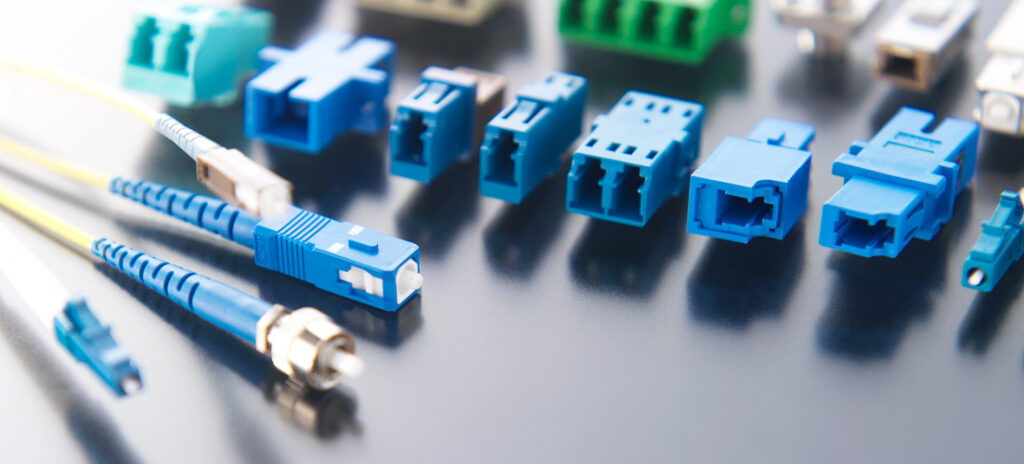
The LC fiber optic connector is widely used in the telecommunications industry due to its small form factor and excellent performance. It is known for its high density, allowing for more connectors to be placed in a smaller space. The LC connector is also known for its low insertion loss and high return loss, ensuring efficient signal transmission with minimal disruption. One key characteristic of the LC connector is its push-pull mechanism, which enables easy and quick installation and removal. Additionally, the LC connector utilizes a ceramic ferrule, which provides precise alignment of the fiber cores, resulting in minimal signal loss and improved performance. These characteristics make the LC fiber optic connector an ideal choice for high-speed data transmission and applications requiring reliable connectivity.
Inside This Article
- Characteristics of an LC Fiber Optic Connector
- Key Features of an LC Fiber Optic Connector
- Conclusion
- FAQs
Characteristics of an LC Fiber Optic Connector
The LC Fiber Optic Connector is widely used in telecommunications and data networking due to its small form factor, which is one of its key characteristics. Unlike other larger connectors, the LC connector is compact and takes up less space, making it ideal for high-density installations and environments with limited space.
Another notable characteristic of the LC Fiber Optic Connector is its push-pull mechanism. This mechanism allows for easy insertion and removal of the connector without the need for extra tools or excessive force. With a simple push or pull, the LC connector can be securely connected or disconnected from its mating adapter.
When it comes to compatibility, the LC Fiber Optic Connector offers both single-mode and multimode options. This means that it can be used with different types of optical fibers, depending on the specific requirements of the network. Whether you need long-distance transmission or short-range connectivity, the LC connector can accommodate both scenarios.
The LC connector also stands out for its use of high precision ceramic ferrules. These ferrules ensure efficient optical signal transmission by providing a precise alignment of the fiber cores. This leads to low insertion loss and reduced reflection, resulting in improved signal quality and overall system performance.
Key Features of an LC Fiber Optic Connector
The LC fiber optic connector is widely used in telecommunications and data networking due to its numerous advantages. Let’s take a closer look at some of the key features that make the LC connector stand out.
Low insertion loss and high return loss for reliable performance: The LC connector is known for its exceptional signal transmission capabilities. It has low insertion loss, which means there is minimal signal power loss when the light passes through the connector. Additionally, the LC connector boasts high return loss, ensuring that the majority of the reflected light is captured back into the system, resulting in better performance and signal quality.
Duplex configuration for simultaneous transmission and reception: The LC connector is designed in a duplex configuration, meaning it can accommodate two fiber strands for simultaneous transmission and reception of data. This makes it ideal for applications that require bidirectional communication, such as network switches, routers, and transceivers.
Compatibility with various types of optical fibers, such as single-mode and multimode: The LC connector is versatile and compatible with both single-mode and multimode optical fibers. Single-mode fibers are used for long-distance transmission, while multimode fibers are suitable for shorter distances. This flexibility allows the LC connector to be used in a wide range of networking environments and applications.
Simple and quick termination process: The LC connector features a small form factor and utilizes a push-pull latching mechanism for easy insertion and removal. It also makes use of a ceramic ferrule, which provides precise alignment between the fibers for efficient signal transfer. These features contribute to a simple and quick termination process, saving time and effort during installation or maintenance.
Overall, the LC fiber optic connector’s low insertion loss, high return loss, duplex configuration, compatibility with different fiber types, and simple termination process make it an excellent choice for reliable and efficient data transmission in various networking scenarios.
Conclusion
In conclusion, LC fiber optic connectors possess two main characteristics that make them highly versatile and sought after in the world of telecommunications. Firstly, LC connectors offer a small and compact form factor, making them ideal for high-density applications where space is limited. Their size also enables easier installation and maintenance. Secondly, LC connectors utilize a push-pull mechanism, ensuring a secure and reliable connection that minimizes the risk of signal loss or interruption. This feature makes LC connectors suitable for various network setups, including both single-mode and multimode applications. With their compact design and reliable performance, LC connectors continue to play a significant role in meeting the demands of modern fiber optic connectivity.
FAQs
1. What are the characteristics of an LC fiber optic connector?
2. How does an LC fiber optic connector differ from other types of connectors?
3. What are the advantages of using an LC fiber optic connector?
4. Are LC fiber optic connectors compatible with all types of fiber optic cables?
5. Can LC fiber optic connectors be used in both single-mode and multi-mode applications?
